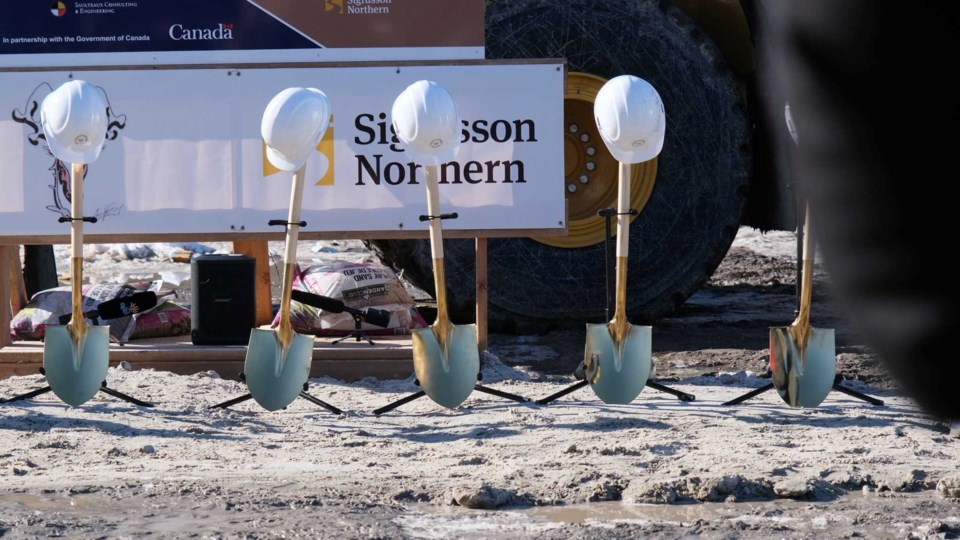ASUBPEESCHOSEEWAGONG — "I'm glad, it's finally happening."
For long-time activist and former chief in Rudy Turtle, a groundbreaking ceremony this week in his community was the culmination of years of work.
Federal officials, community leadership and elders were among those at a groundbreaking in Asubpeeschoseewagong Netum Anishinabek, also known as Grassy Narrows First Nation, Wednesday afternoon for a long-promised specialized medical care facility for those suffering from mercury poisoning.
“I would say it … wasn't an easy journey to really keep at it and (to) keep reminding both levels of government — Ontario and Canada,” said Turtle, the First Nation's chief from 2018 to 2020 and 2022 to 2024, and a strong advocate for the project.
“The key was just to not give up and just keep at it, keep reminding them, keep pushing.”
The First Nation, located about 90 kilometres northeast of Kenora, has been ravaged by the multigenerational effects of nearly a decade’s worth of mercury entering the English-Wabigoon River system starting in the early 1960s. Former owners of the mill in Dryden — upstream from the community — discharged effluent containing the toxic element from a chlor-alkali plant that used to stand on the mill property.
From there, the mercury contaminated the fish which were, in turn, consumed by people in the community — for years before it was detected or any warnings issued. Fishing was not only a traditional source of food for Asubpeeschoseewagong, its fisheries and guiding industries were also significant employers — all of which were decimated.
The community and advocates have long been advocating for a medical and long-term care facility in the First Nation to specifically help those suffering from the mercury’s permanent effects. On Wednesday, Indigenous Services Minister Patty Hajdu was in Asubpeeschoseewagong for the care home’s official groundbreaking.
“Grassy Narrows has worked with a number of experts in the area of mercury treatment and really developed a very sophisticated understanding of what they needed to be able to do this well,” she said in an interview with Newswatch.
“I think their sophistication in some ways exceeded the sophistication of the department, who was thinking through the lens of a very, sort of, traditional model of care — kind of aligned with what you would think of as long-term care.”
Hajdu said that construction experts have told her the care home should be completed by 2027. Aside from the $82 million committed by the federal government for the build, nearly $69 million has also been locked into a trust over 30 years to fund its operation.
“Mercury poisoning needs a whole host of really different kinds of therapies (and) care, and they come in all ages,” Hajdu said.
“I think that's the other difference is that often when you're thinking about long term care, you're thinking about very elderly people — these are middle aged people (and) elderly people that all have varying degrees of neurological damage related to mercury poisoning.”
Former Indigenous Services Minister Jane Philpott first promised the care home in 2017. Turtle said, after that, and for years, it was a slow process with a lot of back-and-forth with different ministers holding the Indigenous services portfolio and bureaucrats.
“You're constantly jumping hurdles,” he said.
Hajdu said it was a “huge honour” to be in Asubpeeschoseewagong for the groundbreaking, and to “be the minister that was able to achieve closing the gap between what the department visualized and what the community wanted.”
For Turtle, knowing the shovels are in the ground, is important.
“I guess the key thing is never give up and just keep pushing,” he said. “There's quite a few people involved to make sure this happened.”
